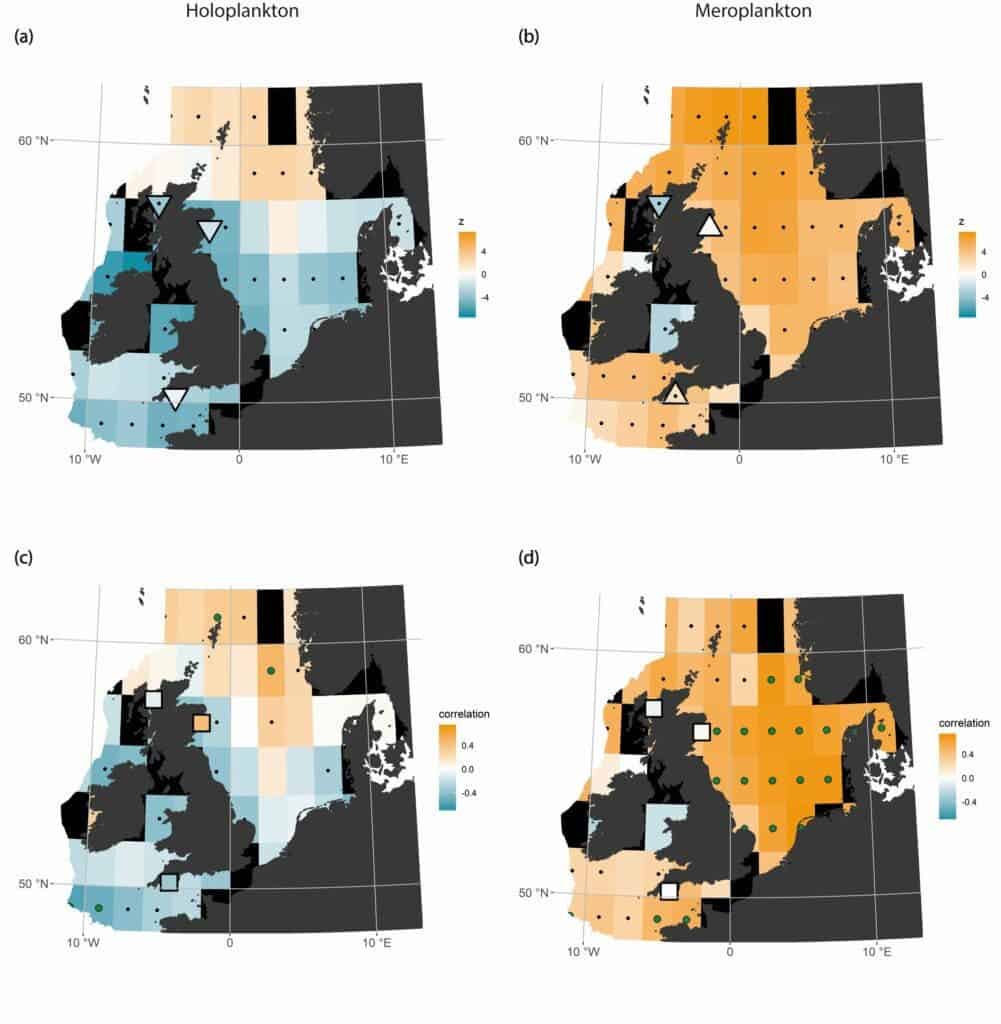Plankton living in the waters around the UK have been undergoing dramatic changes in the past six decades, a new study reports.

Image credits: University of Plymouth
The findings showcase the effect of climate change on the microscopic algae, which underpin the entire ocean food web. The results are particularly worrying as changes in plankton populations can have drastic ramifications for the health of all ocean life and the services they provide to humanity around the globe.
A sea of troubles
“Plankton are the base of the entire marine food web. But our work is showing that climate change has caused plankton around UK waters to experience a significant reorganisation,” says Dr. McQuatters-Gollop, the lead scientist for pelagic habitats policy for the UK and co-lead author of the study.
“These changes in the plankton suggest alterations to the entire marine ecosystem and have consequences for marine biodiversity, climate change (carbon cycling) and food webs including commercial fisheries.”
The study, led by members from the University of Plymouth, collaborated with researchers across the UK and combined findings from several offshore surveys such as the Continuous Plankton Recorder (CPR) and UK inshore long-term time-series. Then, the team overlapped these observations with records of sea surface temperature changes to see whether climate change was impacting plankton communities — they found that yes, it has been, for at least six decades.
The analyses of plankton functional groups showed profound long-term changes across large geographical areas around the UK coastline. For example, the average abundance of meroplankton (a group of animal plankton which includes lobsters and crabs that lives on the seafloor) between 1998 and 2017 was 2.3 times higher than the average for 1958-1967 in the North Sea, coinciding with a period of increasing sea surface temperatures. At the same time, a general decrease in plankton species that live in the water column and a decrease of up to 75% in offshore species populations could be observed.
The team explains that their results provide further evidence that human activity is placing both direct and indirect pressure on marine ecosystems, which are buckling under the strain. They further note that it is vital for us to understand the effect we’re having on these ecosystems since any perturbation here will be felt throughout our communities as well. Commercial fish stocks, sea bird populations, and the ocean’s ability to create oxygen from CO2 are all dependent on plankton.
“In this paper, we have tried to turn decades of speculation into evidence. It has long been thought that warming seas impact on plankton, the most important organisms in the marine food web,” says Professor Paul Tett, from the Scottish Association for Marine Science (SAMS) in Oban, co-author of the paper.
“By bringing together such a large, long-term dataset from around the UK for the first time, we have discovered that the picture is a complex one. We therefore need to build on the success of this collaboration by further supporting the Continuous Plankton Recorder and the inshore plankton observatories.”
The paper “Lifeform indicators reveal large‐scale shifts in plankton across the North‐West European shelf” has been published in the journal Global Change Biology.









